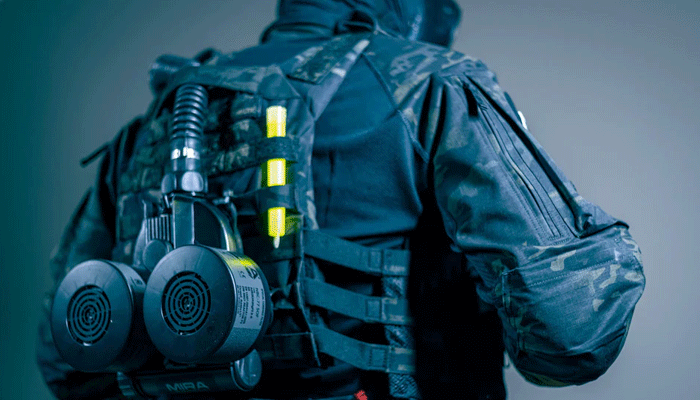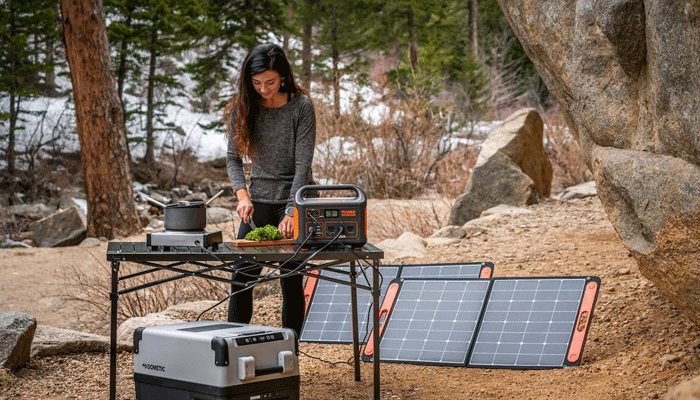
A major issue affecting millions of people worldwide is air pollution. According to the World Health Organization, more than 90% of the global population lives in areas where air quality exceeds the recommended limits. Exposure to air pollutants can cause various health issues, such as respiratory infections, asthma, allergies, chronic obstructive pulmonary disease, lung cancer, and cardiovascular diseases.
One way to protect yourself from the harmful effects of air pollution is to wear an air purifying respirator (APR). An APR is a device that covers your nose and mouth and filters out the contaminants in the air before you breathe them in. There are different types of APRs, such as disposable masks, reusable masks, half-face masks, full-face masks, and powered air-purifying respirators (PAPRs).
However, not all APRs are created equal. Some may offer more protection, comfort, and durability than others. How do you find the best APR for your needs? Here are some excellent suggestions to assist you in making a wise choice.
Know the level of protection you need
The first thing you need to consider is the level of protection you need from an APR. This depends on the type and concentration of the pollutants you are exposed to, as well as the duration and frequency of your exposure. You also need to take into account your personal health conditions and preferences.
The level of protection of an APR is indicated by its assigned protection factor (APF), which is the ratio of the concentration of a contaminant in the ambient air to the concentration inside the respirator. The higher the APF, the more protection the respirator provides. For example, an APR with an APF of 10 means that it can reduce the exposure to a contaminant by 10 times.
The APF of an APR also depends on the type and efficiency of the filter it uses. Filters are classified by the National Institute for Occupational Safety and Health (NIOSH) into three series: N, R, and P. Each series has three levels of efficiency: 95%, 99%, and 99.97%. For example, an N95 filter means that it can filter out at least 95% of non-oil-based particles, such as dust, pollen, and bacteria. An R99 filter means that it can filter out at least 99% of oil-based and non-oil-based particles, such as smoke, fumes, and viruses. A P100 filter means that it can filter out at least 99.97% of oil-based and non-oil-based particles, as well as some radioactive particles.
Know the fit and comfort of the respirator
The second thing you need to consider is the fit and comfort of the respirator. A good fit means that the respirator seals tightly around your face and prevents any leakage of air. A good comfort means that the respirator does not cause any discomfort, irritation, or fatigue while wearing it.
The fit and comfort of a respirator depend on several factors, such as the size, shape, and material of the respirator, the type and position of the straps, the presence and quality of the nose clip, the presence and size of the exhalation valve, and the weight and balance of the respirator.
You should choose a respirator that fits your face well and feels comfortable to wear. You can test the fit of a respirator by performing a user seal check, which involves covering the respirator with your hands and inhaling and exhaling sharply. If you feel any air leaking from the edges of the respirator, you need to adjust the straps, the nose clip, or the position of the respirator until you get a proper seal.
You should also choose a respirator that is made of soft and breathable material, such as cotton or polyester, that does not irritate your skin or cause allergies. You should avoid respirators that are made of stiff or rough material, such as plastic or rubber, that can cause chafing or rashes. You should also look for respirators that have adjustable and elastic straps that do not dig into your ears or head. You should avoid respirators that have rigid or fixed straps that can cause pressure or pain.
You should also look for respirators that have a nose clip that conforms to the shape of your nose and prevents the respirator from slipping or fogging up your glasses. You should avoid respirators that have a loose or missing nose clip that can cause gaps or discomfort. You should also look for respirators that have an exhalation valve that reduces the heat and moisture buildup inside the respirator and makes breathing easier. You should avoid respirators that do not have an exhalation valve that can cause suffocation or sweating.
You should also look for respirators that are lightweight and balanced, so that they do not cause any strain or fatigue on your face or neck. You should avoid respirators that are heavy or bulky, so that they do not interfere with your vision or movement. Enhance your respiratory protection with exclusive savings using the MIRA Safety Coupon Code.
Know the durability and maintenance of the respirator
The third thing you need to consider is the durability and maintenance of the respirator. A durable respirator means that it can withstand wear and tear and last for a long time. A low-maintenance respirator means that it does not require frequent cleaning or replacement and is easy to store and dispose of.
The durability and maintenance of a respirator depend on several factors, such as the type and quality of the respirator, the type and frequency of use, the type and level of exposure, and the storage and disposal conditions.
You should choose a respirator that is durable and low-maintenance, so that you can save time and money and reduce waste and environmental impact. You can check the durability and maintenance of a respirator by looking at the following aspects:
• The type and quality of the respirator. Generally, reusable respirators are more durable and cost-effective than disposable respirators, as they can be used multiple times and have replaceable filters. However, reusable respirators also require more maintenance, such as cleaning, disinfecting, and inspecting, to ensure their effectiveness and hygiene. Disposable respirators are less durable and cost-efficient, as they can only be used once and have to be discarded after use. However, disposable respirators also require less maintenance, as they do not need to be cleaned or disinfected, and only need to be inspected before use.
• The type and frequency of use. The more you use a respirator, the more it wears out and loses its protection and comfort. You should follow the manufacturer’s instructions on how often you should replace or clean your respirator, depending on the type and frequency of use. For example, some respirators may need to be replaced after every use, while others may need to be replaced after a certain number of hours or days. Some respirators may need to be cleaned after every use, while others may need to be cleaned after a certain number of uses or exposures.
• The type and level of exposure. The more you are exposed to pollutants, the more your respirator gets contaminated and clogged. You should check the condition of your respirator regularly and replace or clean it as soon as you notice any signs of damage or deterioration, such as tears, holes, cracks, discoloration, odor, or reduced airflow. You should also follow the manufacturer’s instructions on how to store and dispose of your respirator properly, depending on the type and level of exposure. For example, some respirators may need to be stored in a sealed bag or container, while others may need to be disposed of in a hazardous waste bin or incinerator. Keep yourself protected and save with the Accessories Coupon Code.
Conclusion
An air purifying respirator is a valuable device that can protect you from the harmful effects of air pollution. However, not all respirators are the same. You need to find the best respirator for your needs, based on the level of protection, fit and comfort, and the durability and maintenance of the respirator. By following the tips we have shared in this blog post, you can make an informed and smart choice and enjoy a healthier and happier life.








